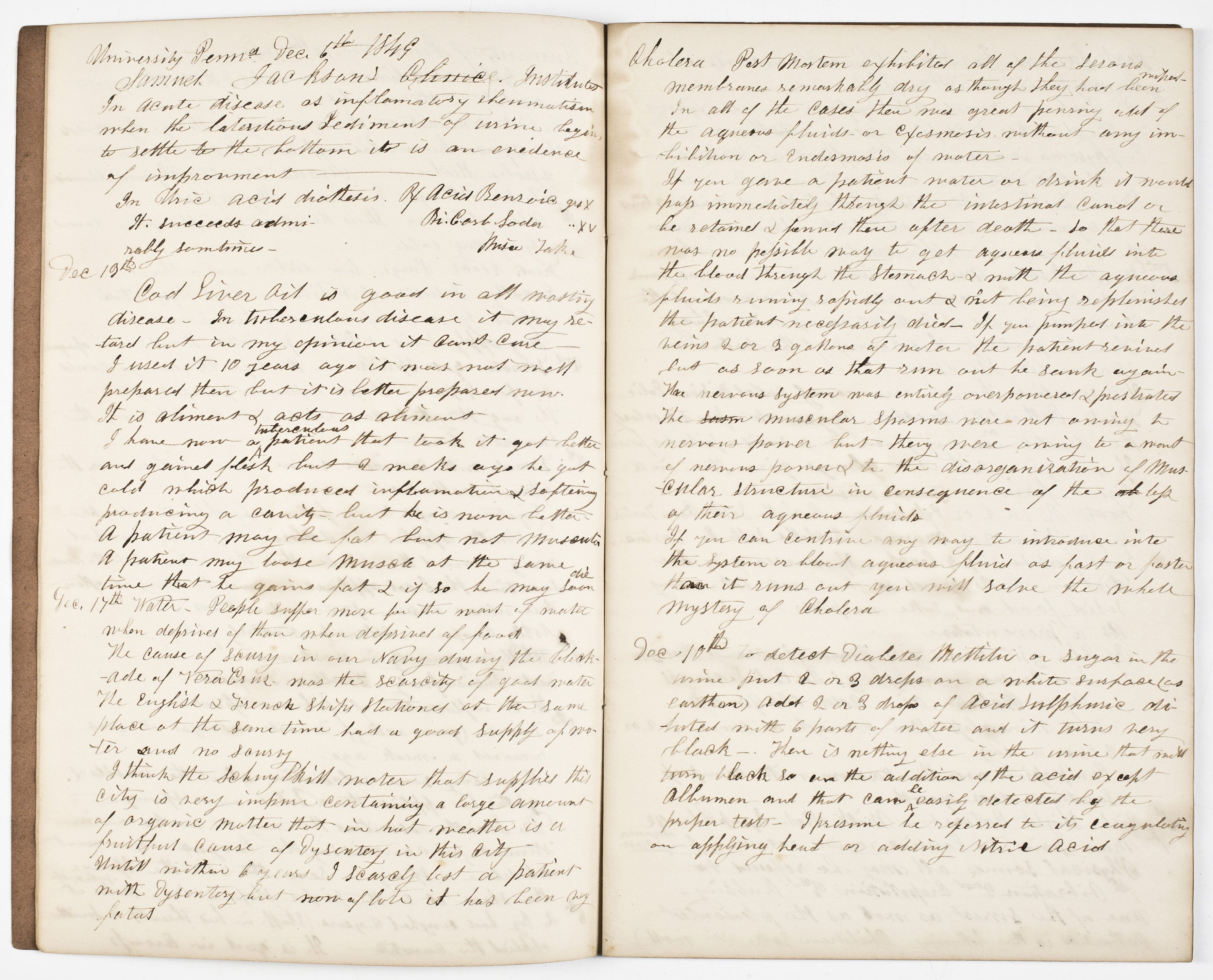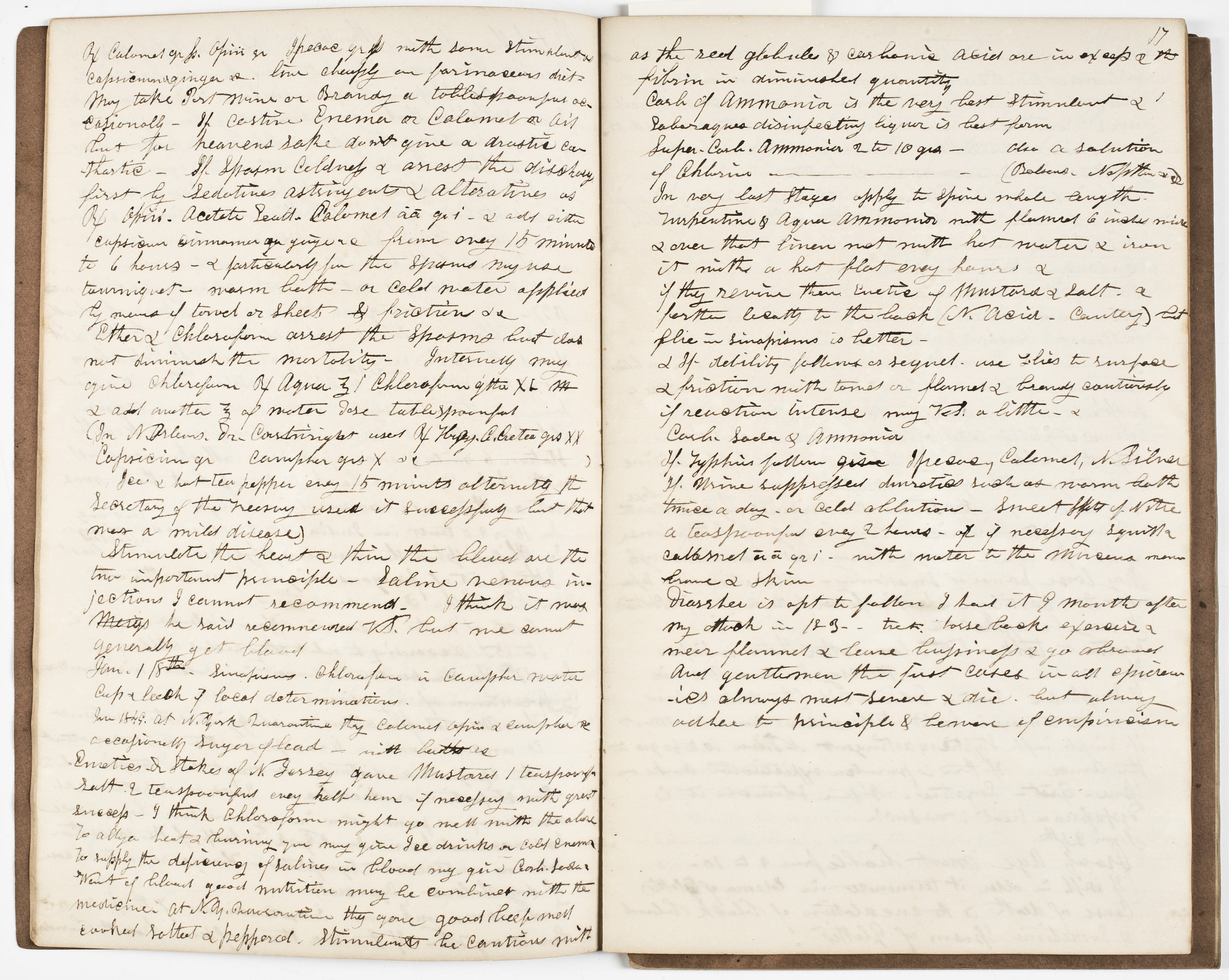Bloggers at Past is Present have previously written about the recent donation of Pike-Wright Family Papers in several posts. This post is continuing a look at Dr. Nathan Pike’s medical career.
 In 1837, at the age of eighteen, Nathan Pike began teaching in the Foster, Connecticut, district schools and continued this employment for three or four years. His certificate, written by the school committee, stated that he was “a gentleman of unblemished character and worthy of public patronage as a school master.”
In 1837, at the age of eighteen, Nathan Pike began teaching in the Foster, Connecticut, district schools and continued this employment for three or four years. His certificate, written by the school committee, stated that he was “a gentleman of unblemished character and worthy of public patronage as a school master.”
In August 1839, Nathan enrolled at Berkshire Medical Institution

in Pittsfield, Massachusetts, which had recently severed its ties to Williams College, becoming an independent medical school. He attended lectures by Professor Watts on General and Pathological Anatomy and by Dr. David Palmer on Geology.
Nathan Pike’s medical education follows a complicated trajectory. His introduction to medicine at an institution rather than through an apprenticeship is unusual. In the first half of the nineteenth century, training for physicians (in New England, at least) traditionally began with a three-year apprenticeship under one or several sequential doctors. A minority continued their education at medical school, which consisted of two years of lectures—the second year being a repetition, sometimes verbatim, of the first. The semester lasted four months. Formal medical education was not necessary—anyone could practice medicine. No licensing existed.
In November, 1839, after completing the semester in Pittsfield, Nathan started an apprenticeship with D. W. Hovey, in Killingly, Connecticut. A paper in the collection, signed and dated by Dr. Hovey in October 1841, attests that Nathan Pike studied medicine, surgery, and collateral branches of medicine and “witnessed” the practice of medicine with him for a period of one year and eleven months.
During 1840, Nathan signed a contract in July to teach in the Westfield schools, returned for a second semester, starting in August, at Berkshire Medical Institution and in December began a second apprenticeship with William Hubbard, M.D. Two papers in the collection, signed by Dr. Hubbard, certified that Nathan read medicine with him from December 1840 until August 1841.
In 1841, Nathan’s medical notes move from Pittsfield to New York, where he studied at New York University Medical Department, graduating in 1842. His training with Dr. Hubbard must have coincided with his schooling, as one certification noted he had seen hospital practice and had free access to the dispensary and infirmary during his apprenticeship.
Nathan opened his practice in Sterling, Connecticut, in 1842, but it seems he was a lifelong student. His ledgers and notebooks indicate he returned to lectures given by Dr. Mott at his alma mater in 1846. And in November 1849, he again returned to Dr. Mott’s surgical clinic before continuing his education in December in Philadelphia.
It was natural that Dr. Pike would be drawn to Philadelphia, the center of American medical education, where its famous institutions hosted many of the most prestigious American physicians. In 1825, Jefferson Medical College became the first in the country to establish a teaching clinic. Prevailing medical school curricula then consisted only of lectures. Jefferson’s inclusion of patient care with formal education was unique and innovative. Nathan is listed as a student at the College in the 1849-50 semester, when there were 477 students, with only 188 studying for a degree. Most, like Nathan, were presumably clinicians advancing their education by viewing the latest surgical techniques and becoming acquainted with the latest medical practices. In the clinics he attended, he learned from Professors John K. Mitchell, Robley Duglison, William Gibson, Samuel Jackson, and Thomas Mütter.
Nathan’s interest in medical education continued throughout his life. Among his collected papers is an announcement from Castleton Medical College in Vermont, listing the faculty, curricula, tuition, and helpful information about the school. He is listed in 1856 as a member for a two-year term of Yale Medical School’s Examining Board. He died—a young man of thirty-eight—the next year of tuberculosis before his term expired.

Very interesting! I wish I had seen this when I was there for my fellowship last December. Especially interesting in light of several doctor’s papers (Stearns MSS, among others) at AAS who did not follow the normal trajectory in becoming doctors (or studying in a time when there was virtually no established trajectory).